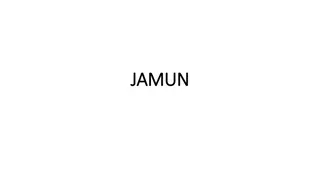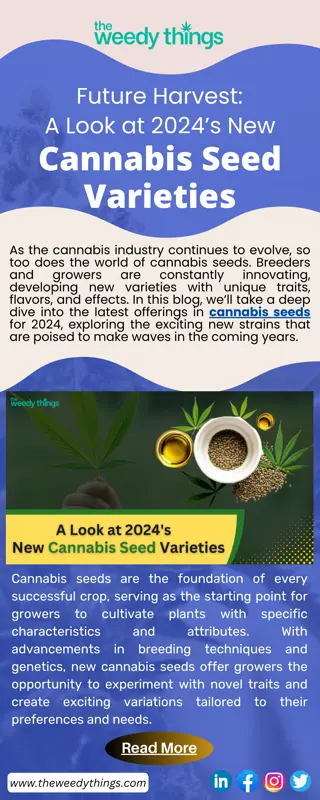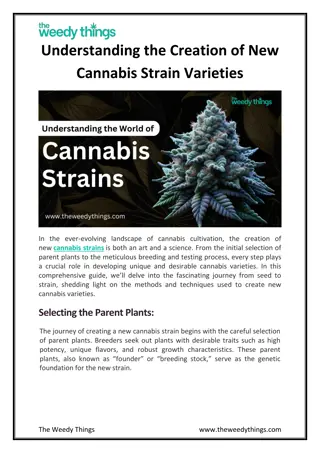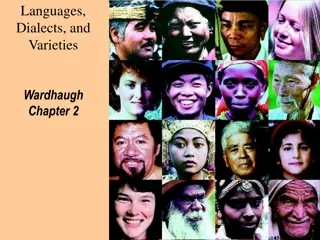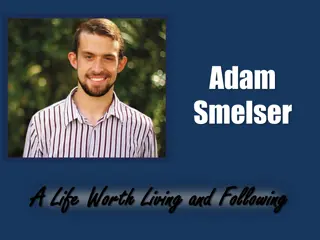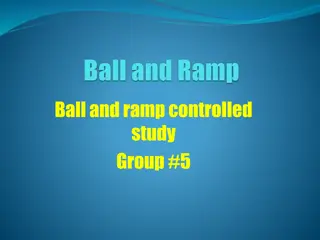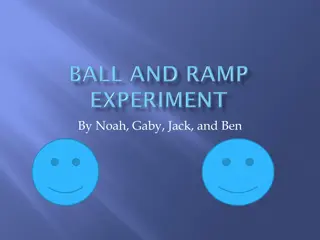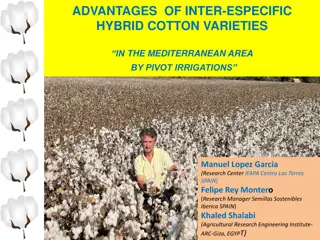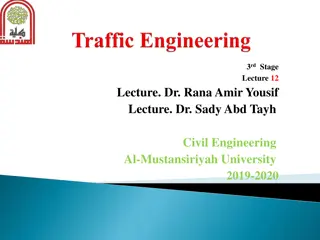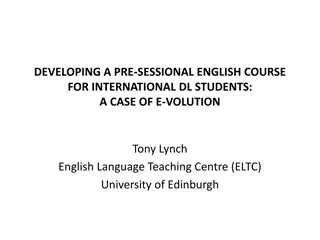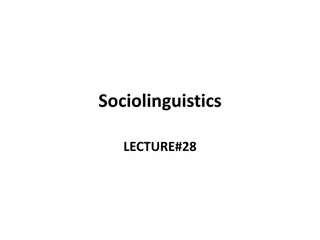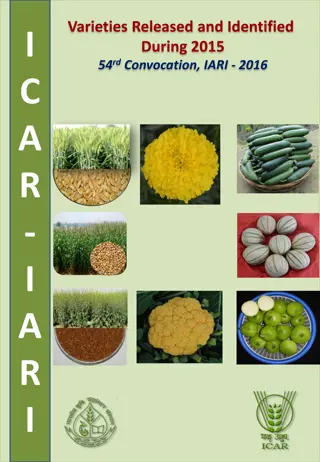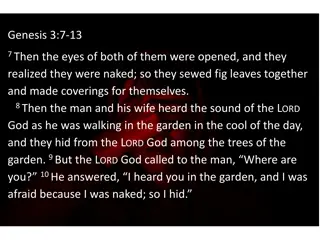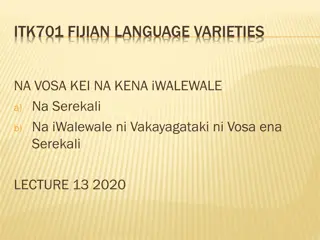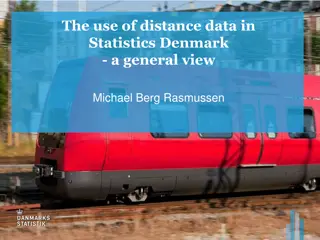Measuring Distance Between Language Varieties by Adam Kilgarriff
Adam Kilgarriff provides insights on comparing language varieties through qualitative and quantitative methods, corpus comparisons, and qualitative analysis using keyword lists and corpora contrast. The study explores techniques to evaluate language corpora scientifically and outlines the role of corpus linguistics in identifying variation across languages.
Download Presentation

Please find below an Image/Link to download the presentation.
The content on the website is provided AS IS for your information and personal use only. It may not be sold, licensed, or shared on other websites without obtaining consent from the author.If you encounter any issues during the download, it is possible that the publisher has removed the file from their server.
You are allowed to download the files provided on this website for personal or commercial use, subject to the condition that they are used lawfully. All files are the property of their respective owners.
The content on the website is provided AS IS for your information and personal use only. It may not be sold, licensed, or shared on other websites without obtaining consent from the author.
E N D
Presentation Transcript
Measuring Distance between Language Varieties Adam Kilgarriff, Jan Pomikalek, Pavel Rychly, Vit Suchomel Supported by EU Project PRESEMT
Kilgarriff: Measuring IVACS, Leeds, June 2012 How to compare language varieties Qualitative Quantitative Quantitative means corpus Corpus represents variety Compare corpora 2
Kilgarriff: Measuring IVACS, Leeds, June 2012 My big question How to compare corpora How else can corpus methods/corpus linguistics be scientific Roles How do varieties contrast How do corpora contrast When we don t know if they are different Find bugs in corpus construction 3
Kilgarriff: Measuring IVACS, Leeds, June 2012 Corpus comparison Qualitative Quantitative 4
Kilgarriff: Measuring IVACS, Leeds, June 2012 Qualitative Take keyword lists [a-z]{3,} Lemma if lemmatisation identical, else word C1 vs C2, top 100/200 C2 vs C1, top 100/200 study 5
Kilgarriff: Measuring IVACS, Leeds, June 2012 Qualitative: example, OCC and OEC OEC: general reference corpus OCC: writing for children Look at fiction only Top 200 keywords (each way) what are they? 6
Kilgarriff: Measuring IVACS, Leeds, June 2012 7
Kilgarriff: Measuring IVACS, Leeds, June 2012 Do it Sketch Engine does the grunt work It s ever so interesting 8
Kilgarriff: Measuring IVACS, Leeds, June 2012 Quantitative Methods, evaluation Kilgarriff 2001, Comparing Corpora, Int J Corp Ling Then: not many corpora to compare Now: Many Ad hoc, from web First question: is it any good, how does it compare Let s make it easy: offer it in Sketch Engine 9
Kilgarriff: Measuring IVACS, Leeds, June 2012 Original method C1 and C2: Same size, by design Put together, find 500 highest freq words For each of these words Freqs: f1 in C1, f2 in C2, mean=(f1+f2)/2 (f1-f2)2/mean (chi-square statistic) Sum Divide by 500: CBDF 10
Kilgarriff: Measuring IVACS, Leeds, June 2012 Evaluated Known-similarity corpora Shows it worked Used to set parameter (500) CBDF better than alternative measures tested 11
Kilgarriff: Measuring IVACS, Leeds, June 2012 Adjustments for SkE Problem: non-identical tokenisation Some awkward words: can t undermine stats as one corpus has zero Solution commonest 5000 words in each corpus intersection only commonest 500 in intersection 12
Kilgarriff: Measuring IVACS, Leeds, June 2012 Adjustments for SkE Corpus size highly variable Chi-square not so dependable Also not consistent with our keyword lists Link to keyword lists link quant to qual Keyword lists nf = normalised (per million) frequencies Keyword lists: nf1+k/nf2+k Default value for k=100 We use: if nf1>nf2, nf1+k/nf2+k, else nf2+k/nf1+k Evaluated on Known-Sim Corpora as good as/better than chi-square 13
Kilgarriff: Measuring IVACS, Leeds, June 2012 14
Kilgarriff: Measuring IVACS, Leeds, June 2012 15
Kilgarriff: Measuring IVACS, Leeds, June 2012 What s missing Heterogeneity how similar is BNC to WSJ ? We need to know heterogeneity before we can interpret The leading diagonal 2001 paper: randomising halves Inelegant and inefficient Depended on standard size of document 16
Kilgarriff: Measuring IVACS, Leeds, June 2012 New definition, method (Pavel) Heterogeneity (def) Distance between most different partitions Cluster to find most different partitions Bottom-up clustering until largest cluster has over one third of data Rest: the other partition Problem nxn distance matrix where n > 1 million Solution: do it in steps 17
Kilgarriff: Measuring IVACS, Leeds, June 2012 Summary Corpus comparison Qualitative: use keywords Quantitative On beta Heterogeneity (to complete the task) to follow (soon) 18
Kilgarriff: Measuring IVACS, Leeds, June 2012 Simple maths for keywords This word is twice as common in this text type as that Focus Corp 2m 80 Ref corp 15m 300 ratio N freq Freq per m 40 20 2 19
Kilgarriff: Measuring IVACS, Leeds, June 2012 Intuitive Nearly right but: How well matched are corpora Not here Burstiness Not here Can t divide by zero Commoner vs. rarer words 20
You cant divide by zero fc 10 rc 0 ratio ? buggle stort nammikin 100 1000 0 0 ? ? Standard solution: add one fc 11 rc 1 ratio 11 buggle stort nammikin 101 1001 1 1 101 1001 Problem solved IVACS, Leeds, June 2012 Kilgarriff: Measuring 21
High ratios more common for rarer words fc rc ratio interesting? spug 10 1 10 no grod 1000 100 10 yes some researchers: grammar, grammar words some researchers: lexis content words No right answer Slider? IVACS, Leeds, June 2012 Kilgarriff: Measuring 22
Solution: dont just add 1, add n n=1 word obscurish middling common fc rc fc+n rc+n Ratio 11.00 1.99 1.20 Rank 10 200 0 11 201 1 1 2 3 100 101 12000 10000 12001 10001 n=100 word obscurish middling common IVACS, Leeds, June 2012 fc rc fc+n rc+n Ratio 1.10 1.50 1.20 Rank 10 200 0 110 300 100 200 3 1 2 100 12000 10000 12100 10100 Kilgarriff: Measuring 23
Solution n=1000 word obscurish middling common fc rc fc+n 1010 1200 13000 rc+n Ratio Rank 10 200 0 1000 1100 11000 1.01 1.09 1.18 3 2 1 100 12000 10000 Summary word obscurish middling common IVACS, Leeds, June 2012 fc rc n=1 1st 2nd 3rd n=100 2nd 1st 3rd n=1000 3rd 2nd 1st 10 200 0 100 12000 10000 Kilgarriff: Measuring 24


